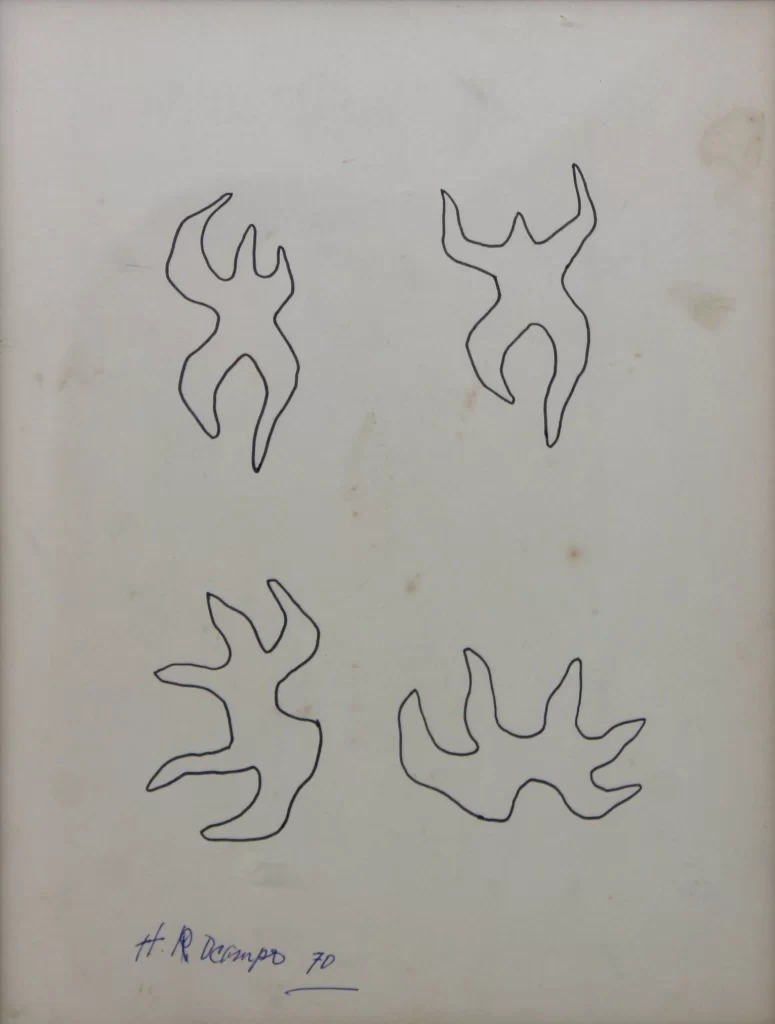Art Talks
Unraveling the World of Filipino Abstract Artists
Filipino abstract art is a dynamic fusion of colors, forms, and symbols, reflecting the diverse cultural backdrop and individual perspectives of the artists. Setting out on a quest to decipher the visual lexicon employed by well-known Filipino abstract artists, including National Artists Hernando R. Ocampo and Arturo Luz, alongside modern visionaries like Nena Saguil and Ben Cabrera. By delving into their techniques, thematic explorations, and cultural influences, we unearth the layers of significance woven into their artworks, offering profound insights into Filipino identity and the broader artistic milieu.
Abstract art is a canvas on which artists convey their emotions, concepts, and experiences through non-representational means. In the Philippines, abstract artists like Hernando R. Ocampo, Arturo Luz, Nena Saguil, and Ben Cabrera utilize various techniques and motifs to articulate their unique viewpoints, drawing from a rich tapestry of cultural influences and personal narratives. Understanding the visual lexicon of these Filipino abstract artists is not just an aesthetic pursuit; it’s an expedition into the depths of their imagination and cultural identity.
Techniques and Styles
Hernando R. Ocampo’s bold geometric structures and Arturo Luz’s precise lines epitomize the diverse repertoire of techniques employed by Filipino abstract artists. Meanwhile, Nena Saguil’s fluid, organic shapes and Ben Cabrera’s textured compositions add further layers of complexity to the visual dialects of Filipino abstract art. Techniques such as layering, texture manipulation, and color blending are frequently utilized, each artist infusing their own distinct approach to their creations, resulting in a tapestry of visual expressions that defy easy categorization.

1960, Sketch, 10.5″ x 8″

1965, Sketch, 10.5″ x 8″

1970, Sketch, 10.5″ x 8″
Cultural Influences
The visual language of Filipino abstract artists is deeply intertwined with the nation’s rich cultural tapestry, drawing inspiration from indigenous art forms, colonial legacies, and contemporary influences. Traditional symbols such as the sarimanok and the baybayin script often find expression in the works of these artists, serving as emblems of cultural heritage and continuity. Likewise, colonial architecture, religious iconography, and urban landscapes serve as fertile ground for artistic exploration, reflecting the intricate interplay between tradition and modernity in Filipino society.
Themes and Narratives
Beyond surface aesthetics, renowned Filipino abstract artists infuse their works with profound themes and narratives. Issues like social disparity, environmental degradation, and political turmoil frequently manifest through abstract compositions, prompting viewers to confront uncomfortable realities and address pressing societal concerns. Personal narratives and introspective musings also permeate the artworks, offering glimpses into the artists’ inner worlds, struggles, and aspirations.
Significance and Impact
Decoding the visual lexicon of Filipino abstract artists reveals profound insights into Filipino identity and the diverse spectrum of artistic expression emanating from the archipelago. By unraveling the layers of significance embedded within the artworks of Hernando R. Ocampo, Arturo Luz, Nena Saguil, and Ben Cabrera, we gain a deeper understanding of Filipino art’s cultural vibrancy and creative ingenuity. Moreover, abstract art’s global reach provides Filipino artists with a platform to showcase their talents internationally, fostering cross-cultural dialogue and exchange.
Renowned Filipino abstract artists, in general, showcase a visual lexicon that underscores the creativity, resilience, and cultural richness of the Filipino populace. Through their artworks, these artists defy traditional artistic conventions, encouraging viewers to embark on a journey of creative discovery. By understanding the techniques, themes, and influences that inform their creations, we gain a deep appreciation for the intricate layers of Filipino identity and the profound impact of abstract art in reshaping our understanding of the world.
Written by Cherry Fulgar
For inquiries about our private collections, please get in touch with us through our social media channels or email at thegallery@imahica.art, specifying the artworks of interest.

